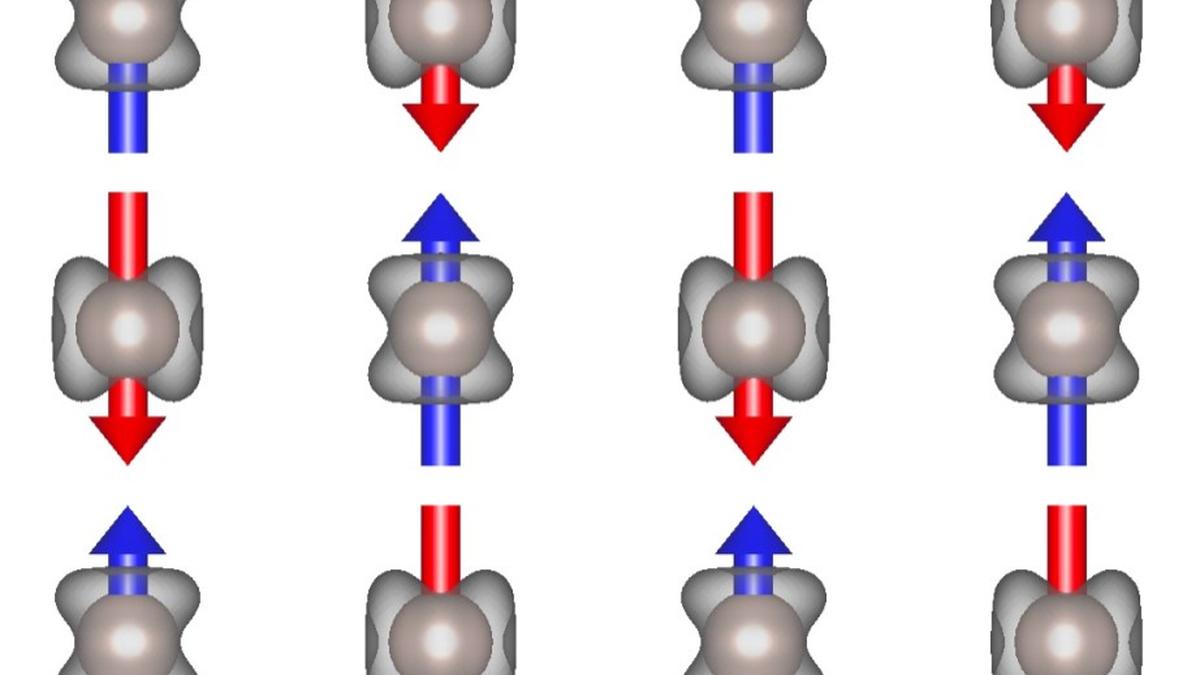In altermagnetic materials, atoms form a regular pattern with their spin and spatial orientation alternating on the neighbouring magnetic sites in the crystal.
| Photo Credit: Libor Šmejkal (CC BY-SA)
Some materials conduct electricity mainly with one kind of charge‑carrier everywhere: either negative electrons (n‑type) or positive ‘holes’ (p‑type). A rare class can breach this behaviour depending on direction, a feature called direction-dependent conduction polarity (DDCP). That is, it can conduct with electrons in one direction and holes in another. Such materials could act as both n‑ and p‑type parts of a circuit or a thermoelectric device without needing two different crystals.
However, only a handful of such materials have been found thus far, and most of them are hard to make or unstable.
A study by researchers at the S.N. Bose National Centre for Basic Sciences and the Indian Association for the Cultivation of Science, both in Kolkata, has reported that the inexpensive and stable magnetic compound chromium-antimony (CrSb) also belongs to this elite group.
The researchers grew single‑crystal plates of CrSb in sealed quartz tubes using chemical‑vapour transport. Then they measured the Hall effect and the Seebeck effect along the length and breadth of the crystal. The Hall effect shows how a magnetic field bends moving charges, revealing whether electrons or holes dominate. In the Seebeck effect, a voltage appears when one side of the crystal is warmed and switches sign between electrons and holes.
Both effects revealed that along the plane of the crystal, electrons dominated whereas holes took over along the vertical axis. This behaviour proved that CrSb exhibited DDCP.
CrSb is thus the first altermagnet, a recently discovered type of magnet, that displays DDCP. Its easy synthesis, composition of abundant elements, and switchable polarity make it a promising platform for future electronics and thermoelectrics, where a single crystal can act as both halves of a p‑n pair, and for spintronic devices.
In altermagnets, the minuscule magnetic moments, or spins, of atoms are arranged in a pattern where they cancel each other out, so the material has no overall magnetism. However, the way the atoms are arranged in the crystal causes electrons with different spins behave differently, even though the material isn’t magnetic overall. These unique properties make altermagnets exciting for future technologies like spintronics.
The scientists also found that when they replaced 2% of the Cr atoms with vanadium, the Hall and Seebeck signals both turned uniformly positive, meaning the whole crystal behaved as p‑type, just as theory predicted.
Published – July 26, 2025 08:00 am IST
